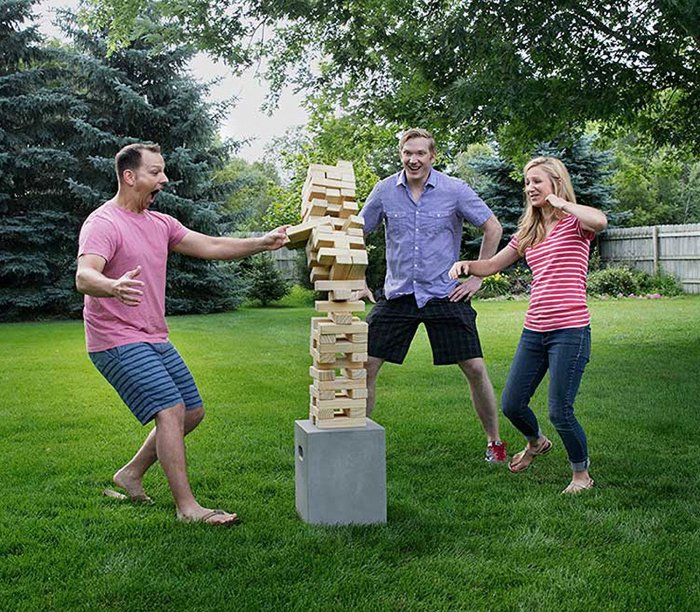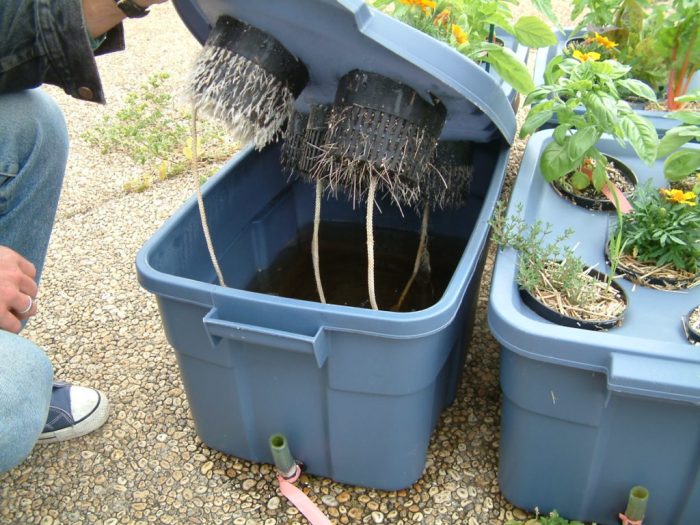DIY outdoor stairs can transform your property, adding functionality and aesthetic appeal. Whether you’re tackling a steep slope or creating a charming pathway, building your own stairs offers a sense of accomplishment and allows you to personalize your outdoor space.
From planning the layout to choosing materials and mastering the construction process, this guide will equip you with the knowledge and skills to build safe and sturdy outdoor stairs. We’ll delve into safety considerations, design options, and essential tools, ensuring your project is a success.
Introduction to DIY Outdoor Stairs
Building your own outdoor stairs can be a rewarding project, offering a sense of accomplishment and significant cost savings. It allows you to customize the design and materials to perfectly complement your outdoor space. However, like any construction project, safety is paramount.
Safety Considerations
Before embarking on this project, it’s crucial to prioritize safety. Proper planning and adherence to safety protocols are essential to prevent accidents and ensure a successful outcome.
- Obtain necessary permits: Contact your local building department to determine if permits are required for your specific project. This ensures compliance with local building codes and regulations.
- Assess the site: Carefully evaluate the terrain and existing conditions. Identify potential hazards like underground utilities or unstable ground that may require additional precautions or adjustments to your design.
- Use proper tools and equipment: Invest in quality tools and equipment, ensuring they are in good working condition. This includes power tools, measuring devices, and personal protective equipment like safety glasses and gloves.
- Follow manufacturer instructions: Carefully read and understand the instructions provided by manufacturers for any materials or equipment you use. This ensures proper installation and handling, minimizing risks.
- Seek professional assistance when necessary: If you encounter any complex or challenging aspects of the project, don’t hesitate to seek guidance from a professional contractor or engineer. Their expertise can ensure the structural integrity and safety of your stairs.
Choosing the Right Materials
Selecting the appropriate materials for your outdoor stairs is crucial for both aesthetics and durability. Consider the following factors when making your choice:
- Material type: Common options include wood, concrete, stone, and composite materials. Each material has its unique properties and benefits. For instance, wood offers a natural look and ease of workability, while concrete provides exceptional durability and strength.
- Climate considerations: The climate in your region plays a significant role in material selection. For areas with harsh winters, materials resistant to freezing and thawing are essential. In humid climates, materials that resist moisture and decay are recommended.
- Maintenance requirements: Different materials require varying levels of maintenance. Wood, for example, needs regular sealing and staining to prevent weathering and decay. Concrete, on the other hand, is generally low-maintenance, requiring only periodic cleaning.
- Budget: Set a realistic budget for your project. Material costs can vary significantly, so consider the overall cost-effectiveness of each option.
Foundation and Framing
A solid foundation and sturdy framing are crucial for creating safe and long-lasting outdoor stairs. This section will guide you through the process of preparing the foundation and constructing the framing for your stairs.
Preparing the Foundation
Before starting construction, it’s important to ensure a stable base for your stairs. This involves digging a trench and pouring concrete to create a solid foundation.
- Mark the Stair Location: Begin by carefully marking the desired location of your stairs on the ground. Use stakes and string to define the area where the stairs will be built.
- Dig the Trench: Dig a trench along the marked area, making it wide enough to accommodate the width of your stairs and deep enough to allow for the concrete foundation. The depth of the trench will depend on local building codes and soil conditions.
- Install Forms: Create forms using plywood or concrete forms to shape the foundation. These forms will hold the concrete in place as it dries. Ensure the forms are level and securely supported to prevent shifting.
- Pour Concrete: Once the forms are in place, pour concrete into the trench. Use a concrete mixer or order ready-mix concrete for larger projects. Ensure the concrete is properly compacted to eliminate air pockets and create a solid base.
- Cure the Concrete: Allow the concrete to cure for at least 24 hours before removing the forms. The curing process allows the concrete to gain strength and become durable.
Framing the Stairs
After the foundation has cured, you can begin constructing the framing for the stairs. The framing provides the structural support for the treads and risers.
- Cut Stringers: Stringers are the long pieces of lumber that support the treads and risers. They are typically made from pressure-treated lumber for outdoor use. Cut the stringers to the required length, considering the height and width of your stairs. The angle of the stringers will determine the slope of your stairs.
- Attach Stringers to Foundation: Secure the stringers to the concrete foundation using anchor bolts or lag screws. Ensure the stringers are level and parallel to each other.
- Install Risers and Treads: Risers are the vertical pieces of lumber that form the steps, while treads are the horizontal pieces that you walk on. Cut the risers and treads to the desired size and attach them to the stringers using screws or nails.
- Add Supports: Depending on the length and height of your stairs, you may need to add additional supports to reinforce the framing. These supports can be placed under the stringers or at the sides of the stairs.
Finishing Touches
Now that your outdoor stairs are structurally sound, it’s time to add the finishing touches that will make them both beautiful and durable. This involves choosing the right paint or stain, applying a sealant for protection, and adding decorative elements to enhance the overall look.
Staining and Painting
Staining and painting your outdoor stairs can significantly impact their appearance and longevity.
- Stain: A stain penetrates the wood, enhancing its natural grain while providing a protective layer. It’s a good option for those who want to maintain the wood’s natural beauty. Popular choices include semi-transparent stains, which offer a balance between color and wood grain visibility, and solid stains, which provide a more opaque finish.
- Paint: Paint provides a solid, opaque finish that completely covers the wood’s natural grain. It offers a wide range of colors and finishes, allowing you to customize the stairs to your liking. Consider using a paint specifically designed for outdoor use, as it’s more resistant to fading, peeling, and moisture.
Sealing and Protecting
Sealing your outdoor stairs is essential for protecting them from the elements and extending their lifespan.
- Waterproofing: A sealant creates a protective barrier against water, preventing moisture from penetrating the wood and causing rot or decay. This is especially important in areas with high rainfall or humidity.
- UV Protection: UV rays from the sun can cause the wood to fade and crack over time. A sealant with UV protection can help prevent this damage and keep the stairs looking their best for years to come.
Decorative Elements
Adding decorative elements can transform your outdoor stairs into a focal point of your landscape.
- Landscaping: Plantings along the sides of the stairs can create a lush and welcoming feel. Consider using low-maintenance plants that thrive in your climate, such as ferns, hostas, or groundcovers.
- Lighting: Incorporating lighting can enhance the safety and aesthetics of your stairs, especially during the evening hours. You can install solar-powered lights, string lights, or even a low-voltage landscape lighting system for a more sophisticated look.
Cost Considerations: Diy Outdoor Stairs
Building outdoor stairs is a rewarding project, but it’s essential to consider the costs involved. Understanding the factors that influence the price can help you budget effectively and make informed decisions throughout the process.
Cost Breakdown
The cost of building outdoor stairs can vary depending on several factors, including the size and complexity of the project, the materials used, and the labor involved. Here’s a breakdown of the estimated costs:
| Category | Estimated Cost |
|---|---|
| Materials | $500 – $2,000+ |
| Labor (if hiring a contractor) | $1,000 – $5,000+ |
| Permits | $50 – $500+ |
Tips for Saving Money, Diy outdoor stairs
Here are some tips to help you save money on your DIY outdoor stairs project:
- Choose affordable materials. While premium materials can be appealing, there are many cost-effective options available. Consider using pressure-treated lumber, composite decking, or recycled materials. For example, using concrete blocks instead of poured concrete for the foundation can significantly reduce costs.
- Shop around for the best prices. Compare prices from different suppliers and consider purchasing materials in bulk to get discounts. Online retailers and home improvement stores often have sales and promotions.
- Do as much of the work yourself as possible. While hiring a contractor can save time, doing some of the work yourself can significantly reduce labor costs. If you’re comfortable with basic carpentry skills, you can likely handle tasks like framing, installing treads, and finishing.
- Consider the season. Lumber prices can fluctuate throughout the year. Buying materials during the off-season can often save you money.
- Check for local building codes. Ensure your project meets local building codes to avoid costly rework or fines.
Building DIY outdoor stairs is a rewarding project that enhances your home’s functionality and curb appeal. With careful planning, attention to detail, and a touch of creativity, you can create a unique and lasting addition to your property. Remember, safety is paramount, so always prioritize proper construction techniques and use high-quality materials. Embrace the challenge, enjoy the process, and take pride in your own handiwork.
Building DIY outdoor stairs can be a rewarding project, especially when you can repurpose materials to save money. If you need to compact the soil for a sturdy foundation, consider building a lawn roller DIY to get the job done right. A well-compacted base will ensure your stairs are stable and last for years to come.



